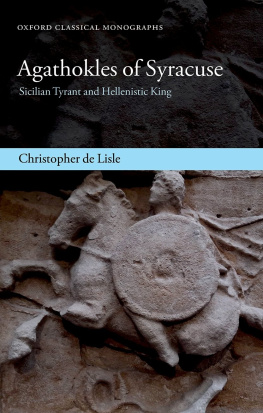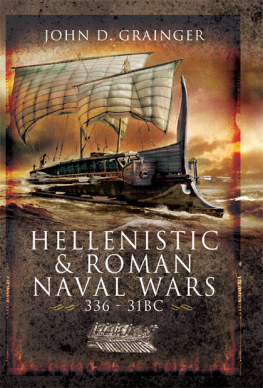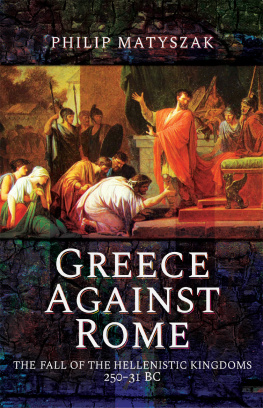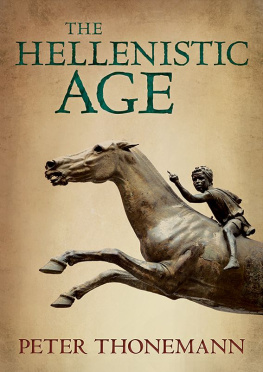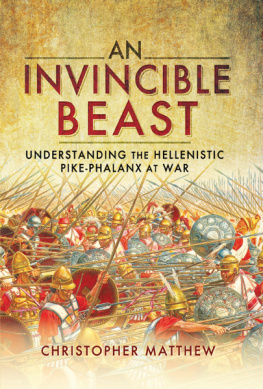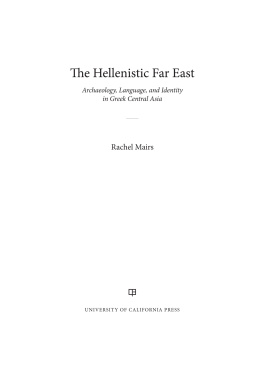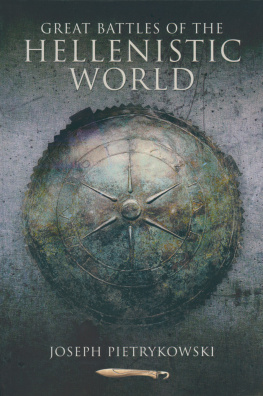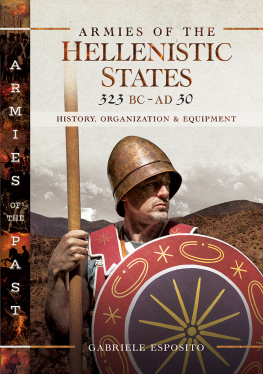First published in 2015 by
Pen and Sword Military
An imprint of
Pen & Sword Books Ltd
47 Church Street
Barnsley
South Yorkshire
S70 2AS
Copyright Christopher Anthony Matthew, 2015
ISBN: 978 1 78383 110 4
PDF ISBN: 978 1 47388 135 8
EPUB ISBN: 978 1 47388 134 1
PRC ISBN: 978 1 47388 133 4
The right of Christopher Anthony Matthew to be identified as Author of this work has been asserted by his in accordance with the Copyright, Designs and Patents Act 1988.
A CIP catalogue record for this book is available from the British Library
All rights reserved. No part of this book may be reproduced or transmitted in any form or by any means, electronic or mechanical including photocopying, recording or by any information storage and retrieval system, without permission from the Publisher in writing.
Printed and bound in England
By CPI Group (UK) Ltd, Croydon, CR0 4YY
Pen & Sword Books Ltd incorporates the Imprints of Pen & Sword Aviation, Pen & Sword Family History, Pen & Sword Maritime, Pen & Sword Military, Pen & Sword Discovery, Pen & Sword Politics, Pen & Sword Atlas, Pen & Sword Archaeology, Wharncliffe Local History, Wharncliffe True Crime, Wharncliffe Transport, Pen & Sword Select, Pen & Sword Military Classics, Leo Cooper, The Praetorian Press, Claymore Press, Remember When, Seaforth Publishing and Frontline Publishing
For a complete list of Pen & Sword titles please contact
PEN & SWORD BOOKS LIMITED
47 Church Street, Barnsley, South Yorkshire, S70 2AS, England
E-mail:
Website: www.pen-and-sword.co.uk
Contents
Acknowledgements
A great number of people helped bring this project to life (in some cases literally). I wish to thank the following people without whose contributions the following work would not have been possible: Firstly, my wife Kate who has always expressed an interest in, and patience with, all aspects of my research; the following members of the Sydney Ancients re-enactment group for their invaluable support in putting many aspects of the Hellenistic pike-phalanx into action: David Armstrong, Krishna Armstrong, Peter Berecz, Paul Gross Fisher, Craig Gascoigne, Mark Kelly, Peter MacKinnon, Robert Wheeler; Doug Nielsen and Anne Nielsen for their assistance and participation in the testing phases of this research; Wayne Robinson of the Routiers Pike & Musket Society for providing me with direction to information on sixteenth and seventeenth century pikes and military training; Andrew Parkin of the Great North Museum, Newcastle upon Tyne, for images and details of the Macedonian pike-butt held in their collection; Willem van Haarlem from the Allard Pierson Museum, Amsterdam for images and details of the Ptolemaic shield mould in their collection; Stavros Paspalas from the Australian Archaeological Institute in Athens for his help in obtaining images used in this publication; Dr. Bill Franzen of Australian Catholic University for his valuable input and assistance with the mathematical formulae used throughout this work; Dr. Ian Plant from Macquarie University for help with some of the ancient passages used in this research; the editors of Antichthon for allowing me to reproduce the information I published in the article The Length of the Sarissa in an earlier edition of the journal (No.46 [2012], pages 79-100); and all of the other friends and colleagues who offered their support and encouragement during the research and writing of this project.
CM
2014
List of Illustrations
List of Tables
List of Plates
Abbreviations
| AAA | (Athens Annals of Archaeology) |
| ABSA | Annual of the British School at Athens |
| AHB | Ancient History Bulletin |
| AJA | American Journal of Archaeology |
| AncSoc | Ancient Society |
| AncW | Ancient World |
| AncWar | Ancient Warfare |
| AthMitt | Mitteilungen des Deutschen Archologischen Instituts, Athenische Abteilung |
| BCH | Bulletin de Correspondance Hellnique |
| BCIS | Bulletin of the Institute of Classical Studies |
| CP | Classical Philology |
| CSCA | California Studies in Classical Antiquity |
| Historia | Historia: Zeitschrift fr Alte Geschichte |
| JAAS | Journal of the Arms and Armour Society |
| JBT | Journal of Battlefield Technology |
| JHS | Journal of Hellenic Studies |
| JMH | Journal of Military History |
| JNAA | Journal of the Numismatic Association of Australia |
| JRMES | Journal of Roman Military Equipment Studies |
| OpRom | Opuscula Romana |
| PAPS | Proceedings of the American Philosophical Society |
| RMA | Revue des tudes Miltaires Anciennes |
Foreword
Under dynamic leaders such as Philip II and Alexander the Great, the ancient Macedonian war machine achieved a series of spectacular victories that have enshrined their names among the ranks of the most renowned generals of all time, and have ensured that the army they forged continues to be admired and studied thousands of years later. The backbone of the Macedonian army was the pike-phalanx, an intimidating mass of infantry who wielded distinctive and unusually long spears or pikes, known as sarissas . However, as this book points out, despite the fame and achievements of the ancient Macedonian military, profound gaps exist in our knowledge concerning almost every aspect of how this phalanx was equipped and functioned.
These uncertainties have spawned a particularly lively and long-standing set of debates regarding the weapons, organization, and tactics of the pike-phalanx, and various rival interpretations have been put forward. As usual, the root cause of the mysteries surrounding this topic is the scarcity of the ancient sources, which consist of a handful of descriptions of the Macedonian phalanx by ancient authors, some contested archaeological finds of pieces of equipment, and a scattering of often vague images in ancient art. Since all the participants in these disputes have been drawing upon this same set of ambiguous primary source material, the arguments have tended to go around and around over the same territory for generations, with the fervor of the disagreements matched only by the improvability of the assertions. The existing ancient evidence may suggest a range of potential answers to basic questions such as how long a sarissa was or how it was held, but within that range, it is impossible to settle upon a definitive conclusion, however vigorously proponents of the various theories might present their arguments. Thus, barring a fresh archaeological discovery, or the finding of a new text, these debates have been stuck in something of a rut whose parameters are delineated by the available evidence. The most significant accomplishment of this innovative book is that it offers a means of breaking free of this scholarly impasse by bringing a new methodology to bear upon these perennial mysteries.
One major way in which Christopher Matthew accomplishes this welcome task is by employing the techniques of what is sometimes termed experimental archaeology: a method in which the scholar reconstructs objects or practices from the ancient world in this particular case, ancient arms and armour and carries out a series of experiments in order to assess specific aspects of their characteristics and use. Vital components of such an approach are a close attention to the information provided by the full array of primary source materials as well as an adherence to vigorous standards of experimental protocol, including the meticulous recording of materials and procedures and the careful, measured, observation of results.


